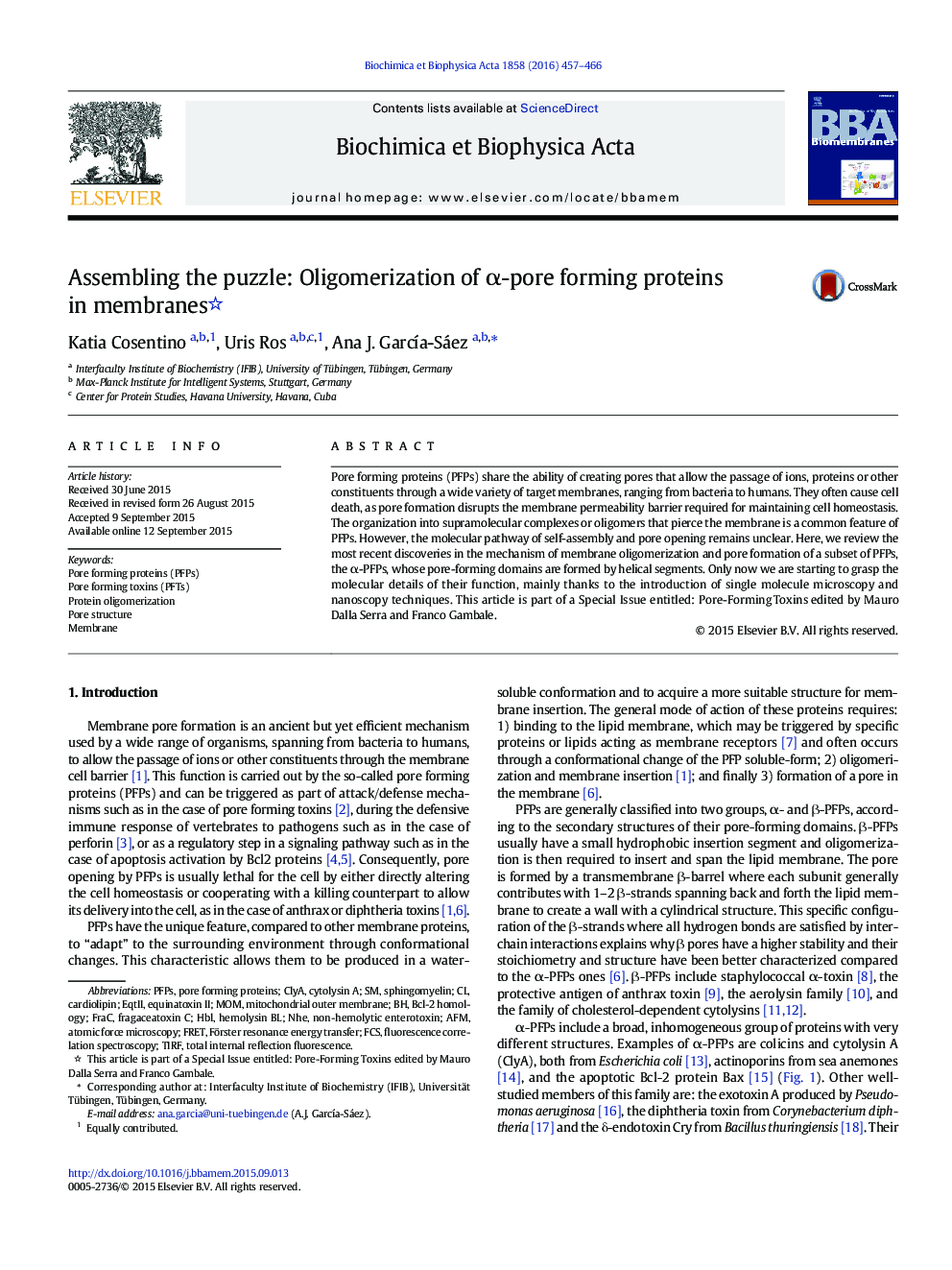| Article ID | Journal | Published Year | Pages | File Type |
|---|---|---|---|---|
| 1943993 | Biochimica et Biophysica Acta (BBA) - Biomembranes | 2016 | 10 Pages |
•α-PFPs membrane insertion can occur before, concomitant or after oligomerization.•α-PFPs can follow a sequential or non-sequential mechanism of membrane assembly.•α-PFPs are able to form both protein-lined or protein–lipid pores.•New aspects pointing out the heterogeneity of the protein–lipid pores have emerged.•The knowledge about α-PFPs has increased thanks to single molecule microscopy techniques.
Pore forming proteins (PFPs) share the ability of creating pores that allow the passage of ions, proteins or other constituents through a wide variety of target membranes, ranging from bacteria to humans. They often cause cell death, as pore formation disrupts the membrane permeability barrier required for maintaining cell homeostasis. The organization into supramolecular complexes or oligomers that pierce the membrane is a common feature of PFPs. However, the molecular pathway of self-assembly and pore opening remains unclear. Here, we review the most recent discoveries in the mechanism of membrane oligomerization and pore formation of a subset of PFPs, the α-PFPs, whose pore-forming domains are formed by helical segments. Only now we are starting to grasp the molecular details of their function, mainly thanks to the introduction of single molecule microscopy and nanoscopy techniques. This article is part of a Special Issue entitled: Pore-forming toxins edited by Mauro Dalla Serra and Franco Gambale.
Graphical abstractFigure optionsDownload full-size imageDownload high-quality image (189 K)Download as PowerPoint slide
